
Water Heaters
Excellent for DI spray rinse, precision cleaning and other applications. Electric inline water heaters with all titanium wetted parts.Sizes up to 144 kW.
...more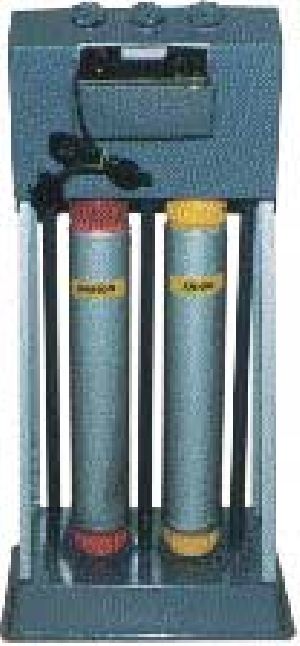
Water Demineraliser
Water Demineralisation is a process of removing mineral salt from the water. Only those substances which ionise in water can be removed by this process before it can be used for any Industrial Applications.It contains two resin columns. CATION EXCHANGER COLUMN : Strong Acidic Resins to replace the metallic cations with hydrogen ions. When no more hydrogen ions is available for exchange, it must be regenerated with HCl.ANION EXCHANGER COLUMN : Strong Basic Resins to remove anions of both strong and weak acids and producing water which is sensibly free from dissolved solids. Regenerated by passing Caustic soda.RAW WATER QUALITY : The raw water should preferably be municipal tap water at ambient temperature, free from colour suspended matter, turbidity, free chlorine, heavy metals, oil, etc. Boring, Well, River bed and turbid water will demand analysis and vigorous pre-filtration before passing through the "DM. Plant”TWO-BED SYSTEMS (K SERIES) : Our two-bed demineralisers are used where water containing as little as 5ppm of dissolved solids or conductivity less than 25 µs/cm is required. Choose from a range of models to suit exact needs available in PVC, FRP, LDPE & MS Rubber lined columns, charged with resins, multi-valve controls, conductivity cell.
...more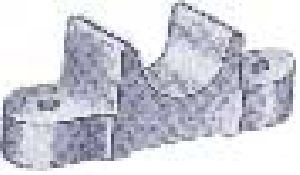
VAT ROD INSULATORS
Rod Insulators or Insulating block made from chemically inert material to give perfect insulation between bus-bar and tank. Available in size 1/2",3/4",1" and higher.
...more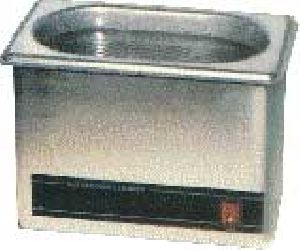
Ultrasonic Cleaner
Aqueous Industrial Ultrasonic Cleaning machines are manufactured indigenously to high International specifications. Available in various standard capaciters and also non-standard models for specific requirement. Ultrasonic Power at high frequency-normally 30Khz (also available in range 23 Khz to 40Khz) is fed to piezo electric transducers (PZT). The electrical power is converted to mechanical vibrations by these PZT. The transducers are bonded to the bottom (or on sides in some applications) of the SS tank containing cleaning solutions. The mechanical vibrations are transferred to the liquid through the tank surface, creating microscopic bubbles - known as cavities in the liquid, which implode with high pressure forming brushing effect on the surface of the components to be cleaned. As a result the contamination is removed. These cavities being microscopic can reach inaccessible crevices, holes in the components where manual cleaning with brush is impossible. The cleaning agent normally dissolves the contamination leaving only the sediment that is not dissolved. Single stage ultrasonic cleaning system is useful with Neutral, Alkaline liquid or mildly Acidic solution.
Brand Name : Electrosonic
...more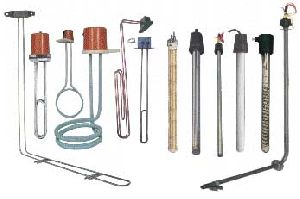
Tubular Immersion Heaters
Rod Heaters are having replaceable element and Tubular Heaters (Straight 'U' 'L' & Hair Pin Shapes) are having non-replaceable elements. Vertical Mounting, meant for all Electroplating and Metal Finishing Processes. For horizontal mounting these heaters are supplied with threaded flanges. Available from 0.5 to 5.0 KW capacities in single or 3 phase operation. TITANIUM STAINLESS STEEL 304, 316 & 316L MILD STEEL l LEAD BONDED M.S SILICA (MILKY WHITE) GLASS (TRANSPARENT) TEFLON TUBED S.S. (only Tubular) Also Protection Guard for Glass & Silica Heaters
...more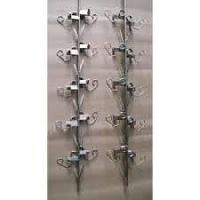
Titanium Jigs
Plating Jigs or Racks are useful where the output is large and even for distribution of electric current. Other advantage uses are · a good deal of saving in labour, time and ensures speedy loading · increasing productivity · reducing production costs. Jig Spines are made from Copper, Brass, SS or Titanium and contact tips are from tempered Stainless Steel, Phosphor Bronze or Titanium Wires.
...more
Temperature Controls:
Sophisticated digital to simple non-indicating controls. Combination controls up to 150 amp capacity.
...more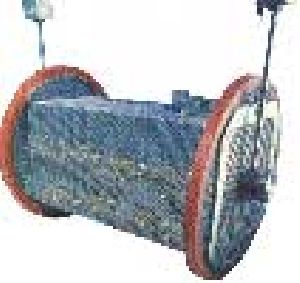
steel barrel
Heavy duty, custom built Barrels are in M.S., S.S., Monel and Inconel suitable for Hot Processes like Phosphating, Electro polishing, Blackening, etc. in round, hexagonal or square shapes, perforated, fixed or variable speed motor or low voltage motor with transformer either overhead or side drive, hanger arms with or without automatic pick ups.
...more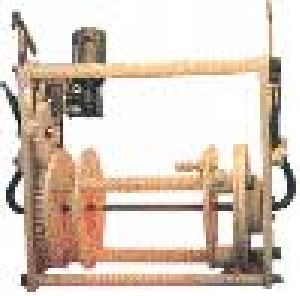
SPOKE BARREL
This ideally designed and custom fabricated PP Barrel is meant for Mini rod, Spokes, Umbrella ribs and other special applications, adjustable to size, speed regulated by DC motor and transformer,
...more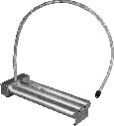
Special Application Heaters
Unique or difficult applications are our specialty. Configurations available include: lab heaters, flexible riser heaters, phosphate heaters, deep tank heaters, Varipower TM heaters, EASYPLUGTM heaters, etc.
...moreSilicon Rectifier
These are today well known for their high quality, workmanship, operating efficiency and long life performance comprising of a double wound transformer to reduce the input voltage to suitable value required for the Rectifier Stack, Interphase Transformer (in 3 ph. units) Silicon Diodes, Hand operated ormotorised stepless on-load control (variac/dimmerstat) or Automatic control where the output voltage, output amperage or current density is constant. Control Panel with D.C. volt / amp. meters and MCB protection, lamps, wheels and choice of paint shade. These rectifiers are in Natural Air cooled and Forced-Air cooled or Natural oil cooling through radiator depending on the ratings, prevailing atmospheric condition and process. The AC input is either 1/220/50 having DC output around 15% ripple or 3/415/50Hz or nearer having ripple almost around 5%. Ripple free Rectifiers are also available. Standard Range Voltage : 8, 12, 16, 20 and 24 generally for plating Amperage : 50, 100, 150, 250, 500, 750, 1000, 1500, 2000, 3000, 4000, 5000 and above. DOSING PUMP CONTROL RECTIFIERS: Any metering pump can be monitored through the Rectifier for Load Current, Repeatability, Addition of chemicals (Time & Quantity), operation in manual or auto mode.
...more
Screw Plug and Flanged Heaters
Wide variety of heater types and features to fit virtually any application. Stainless, titanium, fluoropolymer and other materials. Sizes from ½” screw plug to 14” flanged.
...more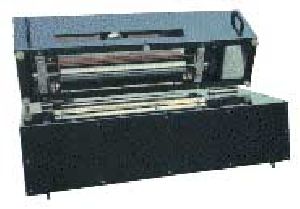
roller tinning machine
This Tin/Solder Coating Machine is used for coating the Tin or Solder (or other metal) on Printed Circuit Board. This improves the solderability and protects the PCBs. The clean drilled PCBupto 310mm width (also available 450 and 600mm) is passed between the coating rollers, rotating at 0.25 r.p.m. The bottom roller transfers tin or solder alloy for the PCB, and the top roller applies uniform pressure for uniform coating. The metal bath is of 7 kgs. capacity, duly insulated and fitted with an electronic temperature controller, 2x0.75 KW heater, 12V DC high torque, variable speed motor, with AC lower drive housing AC input 230V, 50cycles. The unit is housed in stainless steel body or coated with special epoxy coating to ensure durability. Also fitted with Mains, on-off switch, Heaters on - off, Controls & Indicators are housed in a separate or built-in control console.
...more
quartz heaters
Ideal for most acidic chemistries. Metal grounded quartz sheathed heaters up to 30 kW. Polypropylene guards standard.
...more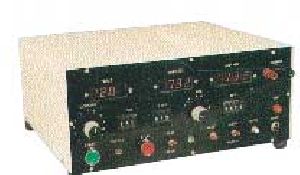
PULSE PLATING RECTIFIERS
This solid state device to impart unique advantages like uniform plating thickness Finer grain structure Excellent adhesion, ductibility & hardness Lower deposit stress Reduces hydrogen embrittlement Defects in HCD & LCD elimination Cost savings Colour variation Pulse Rectifiers are having all the features of CCCV units including Automatic ampere sec/min/hr. meter, Filtered DC output less than 0.1% ripple, Pulse & Pause time adjustable between 0.01 to 999 milli-sec, Output current pulse controllable by thumbwheel switches and Peak voltage / current display Digital meters. OPTIONALS: Computerised Process Module Pulse with Reversing Polarity (PR) or Periodic Reversing Polarity (PRP) or Periodic and continuous Reversing Polarity (PRPR) Metal consumption mode Pulse attachment for conventional CVCC Rectifier High Power Pulse Rectifiers for Hard Anodising and Hard Chrome Plating can be catered as per requirement
...more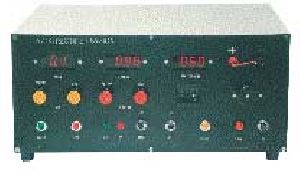
PRECISION RECTIFIERS
The state of art, solid state, thyristorised, high precision, ripple free, constant current and constant voltage, air cooled, compact Rectifier units are single phase input, high quality, maintenance free, with CVCC modes, coarse and finer Potentiometer controls for both voltage and amperage, ripple less than 1% on full load, digital meters with overload protection and short circuit proof, easy operation.
...more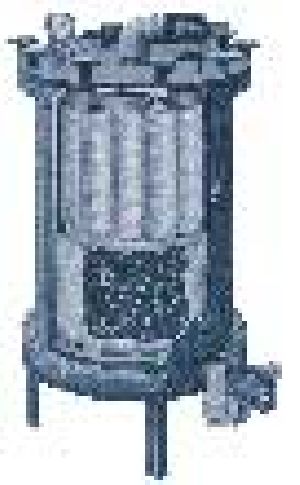
PRE-FILTER CHAMBER
Bag, Carbon or Cartridge individually or in combination) : This is an on-line filtering device with or w/o pump set for flow upto 5000 lit/hr.upto 10 micron with replaceable filter bags, activated carbon or filtering cartridge. Must for contaminated plating solution or water containing excessive dissolved solids, thereby enhancing efficiency of filter / DM water plant.
...more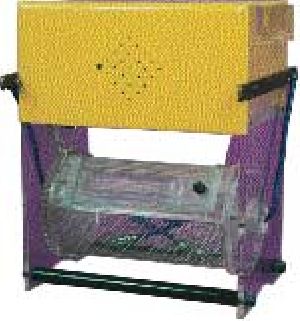
PORTABLE PLATING BARRELS
This fully immersed polypropylene / perspex barrel is suitable for 0.5 to 2 Kg. plating range. The barrel is powered by geared motor, 12 volts D.C. (with power drive) or A.C. geared motor. The tank of PP/PVC / Perspex fitted with Bus-Bars & Danglers. Optional : Heater, Air Agitation, Cathode Movement, Filter, Rectifier etc. Medium BARRELS: Medium portable barrels are in hexagonal design for two sizes viz: 3 to 5 kgs and 7 to 10 kgs. Octagonal Barrels are in bigger sizes from 15 kgs. onwards made of Acrylic, PP or CPVC, for most applications. Powered by low voltage DC geared motor (supplied with Power Drive) or AC motor single or three phase, geared or gearbox driven through V-belt, operated single (having two or four cathode contacts) or two operators or by hoist/transport mechanism. Mechanical disengaging arrangement for loading and unloading. STANDARD SIZES: 11” x 7”, 12” x 8”, 18” x 10”, 24” x 10”A/F or bigger sizes. Suitably lined-tank from 2’ x 1.5’ x 1.5’ onwards can also be made for these Barrels with Standard filltings.
...more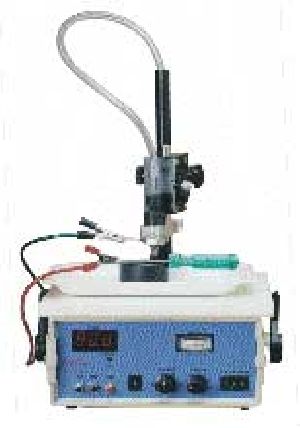
PLATING THICKNESSES MEASURING INSTRUMENTS
This is one piece economical model, on Coulometric principles, on destructive bases for measuring thickness of plating like Brass, Cadmium, Chromium, Copper, Gold, Lead, Nickel, Silver, Tin, Zinc & Alloy plating on ferrous , Non Ferrous and Non Metals bases. This Digital unit can be used for determination of thickness of almost all Combinations of Standard Plating or Metallic Coating on Magnetic base like Mild Steel, Nickle, Cobalt, S.S. etc. Non Magnetic Base like Aluminium, Brass, Cadmium, Chromium, Copper, Silver, Tin etc.
...more
Plating Jigs
Plating Jigs or Racks are useful where the output is large and even for distribution of electric current. Other advantage uses are · a good deal of saving in labour, time and ensures speedy loading · increasing productivity · reducing production costs. Jig Spines are made from Copper, Brass, SS or Titanium and contact tips are from tempered Stainless Steel, Phosphor Bronze or Titanium Wires. igs are to be used for Electroplating, Electro polishing, Painting and Anodizing. For surface treatment such as Phosphating, Electro painting and Enameling, jigs can be used and these are termed as furnace furniture. Jigs made of Titanium are to be used for anodizing / electro polishing. Jigs can be designed, fabricated and insulated according to customers requirements. The following details are required while enquiry/order : (a) Cathode rod diameter or cross section. (b) Vat depth, solution depth, nature of solution and temperature.(c) Spine style, contact style and configuration.(d) Distance between Cathode rod and Anode bus bars and Rectifier Capacity.(e) Nature of articles (if possible samples should be sent).
...more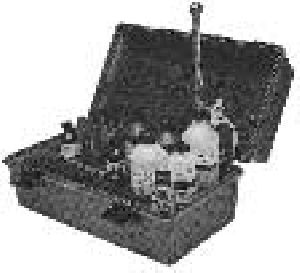
PLATERS TEST SET KIT
This set in a briefcase or wall mounted cup board provides all the Apparatus and re-agents necessary for carrying out regular tests, to estimate the contents like metal, the free cyanide, chloride, boric acid or causticity etc. in various solution. Reagents, and methods of analysis are supplied with the sets. (While ordering, please specify the type of plating solution desired to be analysed and which are the items to be determined from such solution so as supply the kit accordingly).
...more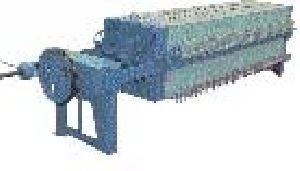
Plate Filter Press
Solid-liquid seperation dewatering hazardous wastes, sludges, reclamation of solids and recovery of chemicals solution. Recessed, gasketed PP plates with manual or air operated Hydraulic enclosure having models upto 50 cu. ft., plate sizes 355 x 355 mm to 1200 x 1200 mm. Used by Chemical Mfrs. and in Effluent Treatment Plant.
...more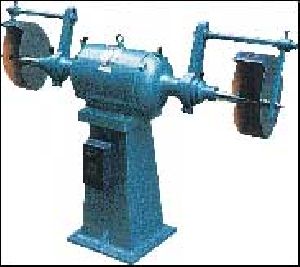
PEDESTAL BUFFERS:
n range 3, 5 & 7.5 H.P. in 3 phase 3000 RPM mounted on Heavy duty C-I stand, complete with push button starter & wheel guard.:
...more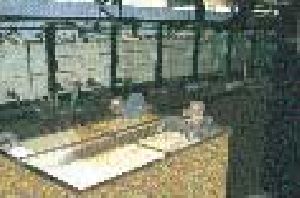
Oil Skimmer
This is an attachment to the overflow collection tank in cleaning system, in which oil contaminated cleaning solution is coming in contact with a rotating disc and scraper. This while in motion separates oil from the fluid surface to give double benefits namely, Cleaning solution is recycled which enhances the service life of cleaning bath and oil can be reused after filtration.
...more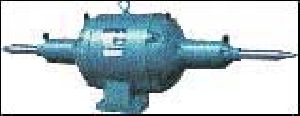
Polishing Machines
Heavy duty buffing machines from 0.25 to 7.5 H.P. are available in two or four ball bearings. Construction of the machines are made sturdy and robust to offer vibration free performance. All Bench Polishers are equipped with reversely, threaded tapered spindles to take buffing mops.
...more
Waste Water Treatment Solution
Tailor made solutions for all type of Water & Waste Water Treatment Solutions
...more
Effluent Treatment Plant
We are offering effluent treatment plant ( waste water treatment ). water & waste water treatment systems & solutions our environmental impact on the earth has exceeded the planet’s life sustaining abilities as well as its self recovery capabilities. Komal understands the need to integrate the process plant, with economical & efficient water & waste water management systems & solutions for your metal finishing & industrial applications. we are truly a one stop source for plant automation with built in value added pollution control, resulting in multiple benefits including compliance with pollution control laws & regulations, along with optimization of capital investment. Be assured to get perfect solutions that work, from a friendly, knowledgeable team who are honest, dependable and proven in the metal finishing, electroplating and allied industries. We are with you long after the job is done. latest technology for effluent treatment with zero discharge & recovery pollution control systems – our product portfolio ● control panels, plc automation ● dosing control equipments ● tanks for effluent collection, storage and treatment ● reactions tanks ● dosing tanks ● oil water separators ● filter press systems ● clariflocculator ● gravitational settling clarifiers ● pressure sand filter ● activated carbon filter ● dm plants ●reverse osmosis ● sludge treatment - sludge dewatering , sludge dryers, centrifuges ● filter media ● pumps ( dosing pumps, centrifugal pumps, metering pumps, screw pumps, effluent discharge pumps, etc) ● agitators & industrial mixers ● blowers ● electrical equipments ● instrumentation for process control - "hanna, usa" range of water testing & treating equipments – rota meters, ph, orp & conductivity meters ● valves - gate, globe, butterfly, diaphragm, ball , pressure release , vacuum release ● level switches ● piping systems - valves, fittings and piping in pp, pvc, hdpe, carbon steel, etc & fitting. waste water recovery systems for plating, phosphating and pcb industry - profit through effluent recycling ● waste minimization ● chemical recovery ● acid recovery ●trivalent chrome purification ● nickel recovery ● carbonate removal ● cleaner recovery offering superior technologies and engineering, with "simplicity of design" waste water treatment chemicals for effluents from surface conditioning process metal finishing process acid pickling and brightening copper plating process nickel plating process chrome plating process zinc plating process tin & tin lead alloy plating other areas of surface finishing ● hydrochloric acid ● sulphuric acid ● sodium bi sulphite ● ferric sulphate ● ferric chloride ● sodium sulphide ● quick lime ● polyelectrolyte’s ● sodium hydroxide ● others waste water treatment consultancy komal, as well as supplying plant and equipment, is able to offer services based on its expertise in relation to a broad range of issues. We can produce: process and instrumentation drawings layout drawings emphasizing the ergonomics of the plant a diagnosis of your existing treatment plant an improvement plan in anticipation of tighter discharge limits areas of expertise chemical and physico-chemical processes for the treatment of metal complexes. zero discharge concept whenever possible. cyanide oxidation processes. chromium reduction techniques. heavy metals precipitation. evaporation (atmospheric and vacuum, heat pump and mvc). membrane technology. ion exchange resin. settlement systems. coagulation and flocculation systems. permanent media filtration. komal has the best designs & solutions for air pollution control also. process description for electroplating wastewater treatment electroplating wastewater comes from surface plating operations where the metal is dipped in an electroplating solution of various types of metals and then rinsed. typical plating includes brass, nickel, cadmium, zinc, silver, copper, and gold. Electroplating wastewater is typically from washing, rinsing and batch dumps and is at a low ph of ~3-5 and contains soluble forms of the various metals. In order to remove soluble metals from the wastewater it must first be made insoluble. The insoluble metal is then coagulated, flocculated and clarified by sedimentation. the typical method to reduce and remove soluble electroplating metals from wastewater is as follows: stage 1– precipitation and coagulation: ph is raised from ~3 to 8.5 with the ph controller using caustic while adding a coagulant such as ferric chloride. Testing of the wastewater may confirm that a coagulant is not needed. A “pin floc” is developed indicating the metal is insoluble. Some applications have plating enhancing chemicals present, emulsifiers and such that may require more sophisticated high performance coagulants to break the bonds and allow the metal to precipitate. stage 2 - flash mix: the wastewater with its precipitated pin floc is introduced to the flash mix zone where a polymer flocculent is added. This stage maximizes flocculent dispersion throughout the coagulated wastewater. stage 3 - flocculation: the wastewater is now introduced to the slow mix zone to agglomerate the pin floc into larger rapid settling particles. clarifier, inclined plate: the flocculated wastewater is introduced into the clarifier where the settling particles land on the inclined plates and are directed downward and into the sludge chamber. The clarified treated water then exits the top of the clarifier and flows downstream to sewer or further treatment if necessary. clarifier sludge handling: the resulting clarifier waste sludge is periodically removed from the clarifier at a slow rate and sent to the sludge holding tank where it further thickens and accumulates a batch for disposal or processing in a filter press. sludge dewatering: the thickened clarifier sludge is allowed to accumulate sufficiently to provide a full batch for the filter press. The filter press is pumped full of the sludge until it is full. The filter press is then emptied of the “cake” which is a semi solid of approximately 20-35 % solids. Sludge cake is high in phosphate and should be disposed of according to environmental regulations. applications: electroplating shops are found in typically two categories, captive and independent shops. Some industries operate their own captive, in house electroplating operation while others outsource to an independent operation. typical industries include: • electroplating shops, captive or independent • automotive suppliers, trucks, motorcycles etc – metal to rubber suspension and body parts • jewellery mfg • machine tool mfg. • metal forming such as stamped metal parts that require plating of various types. • building materials, cadmium plated nuts, bolts etc. . . . • aerospace • wire forming - nails, screws etc • appliance makers • electronics – gold and silver plating of electrical connectors etc. environmental guidelines for electroplating industry industry description and practices electroplating involves the deposition of a thin protective layer (usually metallic) onto a prepared surface of metal, using electrochemical processes. The process involves pre-treatment (cleaning, degreasing, and other preparation steps), plating, rinsing, passivating, and drying. The cleaning and pre-treatment stages involve a variety of solvents (often chlorinated hydrocarbons, whose use is discouraged) and surface stripping agents including caustic soda and a range of strong acids, depending on the metal surface to be plated. The use of halogenated hydrocarbons for degreasing is not necessary as water based systems are available. In the plating process, the object to be plated is usually used as the cathode in an electrolytic bath. There are three main types of plating solutions: are acid or alkaline solutions and may contain complexing agents such as cyanides. waste characteristics any or all of the substances used in electroplating (such as acidic solutions, toxic metals, solvents, and cyanides) can be found in the wastewater, either via rinsing of the product or due to spillage and dumping of process baths. The solvents and vapours from hot plating baths result in elevated levels of volatile organic compounds (vocs) and in some cases, volatile metal compounds (when may contain chromates). Approximately 30 percent of the solvents and degreasing agents used can be released as vocs when baths are not regenerated. the mixing of cyanide and acidic wastewaters can generate lethal hydrogen cyanide gas and this must be avoided. The overall wastewater stream is typically extremely variable (1 liter to 500 liters per square meter of surface plated) but usually high in heavy metals (including cadmium, chrome, lead, copper, zinc, and nickel), cyanides, fluorides, and oil and grease, all of which are process dependent. Air emissions may contain toxic organics (such as trichloroethylene and trichloroethane). cleaning or changing of process tanks and the treatment of wastewaters can generate substantial quantities of wet sludges containing high levels of toxic organics andor metals. pollution prevention and control plating involves different combinations of a wide variety of processes and there are many opportunities to improve upon the traditional practices in the industry. The following improvements should be implemented where possible: changes in process • replace cadmium with high quality corrosion resistant zinc plating. Use cyanide-free systems for zinc plating where appropriate. In those cases where cadmium plating is necessary, use bright chloride, high alkaline baths or other alternatives. However, alternate complexing agents to cyanides may cause problems in wastewater treatment for they may result in the release of heavy metals. • use trivalent chrome instead of hexavalent chrome: acceptance of the change in finish needs to be promoted. 373 374 electroplating industry • give preference to water-based surface cleaning agents, where feasible, instead of organic cleaning agents, some of which are considered toxic. • regenerate acids and other process ingredients, whenever feasible. reduction in drag-out and wastage • minimize drag-out by effective draining of bath solutions from the plated part by measures such as making drain holes in bucket type pieces, if necessary. • allow dripping time of at least 10 to 20 seconds before rinsing. • use fog spraying of parts while dripping. • maintain the density, viscosity, and temperature of the baths to minimize dragouts. • place recovery tanks before the rinse tanks (which then provide make-up for the process tanks). The recovery tank provides for static rinsing with high dragout recovery. minimizing water consumption in rinsing systems it is possible to design rinsing systems to achieve 50-99% reduction of traditional water usage. Testing is required to determine the optimum method for any specific process but proven approaches include: • agitation of rinse water or work pieces to increase rinsing efficiency. • multiple counter current rinses. • spray rinses (especially for barrel loads). management of process solutions • recycle process baths after concentration and filtration. Spent bath solutions should be sent for recovery and regeneration of plating chemicals, not discharged into wastewater treatment units. • recycle rinse waters (after filtration). • regularly analyze and regenerate process solutions to maximize useful life. • clean racks between baths to minimize contamination. • cover degreasing baths containing chlorinated solvents when not in operation to reduce losses. Spent solvents should be sent to solvent recyclers and the residue from solvent recovery properly managed (e.g., blending with fuel and burning in a combustion unit with proper controls for toxic metals). target pollution loads a key parameter is the water use in each process and systems should be designed to reduce water use. Where electroplating is routinely performed on objects with known surface area in a production unit, water consumption of no more than 1.3 liters per sequence meter plated (lm2) for rack plating and 10 lm2 of surface area plated for drum plating should be achieved. The recommended pollution prevention and control measures can achieve the following target levels: • cadmium plating should be avoided. In cases where there are no feasible alternatives, a maximum cadmium load in the waste of 0.3 grams for every kilogram (kg) of cadmium processed is recommended. • at least 90% of the solvent emissions to air must be recovered by the use of an air pollution control system such as a carbon filter. • ozone depleting solvents (such as chlorofluorocarbons and trichloroethane) are not to be used in the process. treatment technologies segregation of waste streams is essential due to the dangerous reactions which can occur: strong acidcaustic reactions can generate boiling and splashing of corrosive liquids; acids can react with cyanides and generate lethal hydrogen cyanide gas. In addition, segregated streams that are concentrated are easier to treat. air emissions exhaust hoods and good ventilation systems protect the working environment but the exhaust streams should be treated to reduce vocs (using carbon filters which enable the reuse of solvents) and heavy metals to acceptable levels before venting to the atmosphere. Acid mists and vapours should be scrubbed with water before venting. In some cases, voc levels of the vapours are reduced by 375 electroplating industry combustion (and energy recovery) after scrubbing adsorption, or other treatment methods. liquid effluents cyanide destruction, flow equalization and neutralization, and metals removal are required, as a minimum, for electroplating plants. Individual design is necessary to address the characteristics of any specific plant but there are a number of common treatment steps. For small facilities, the possibility of sharing a common wastewater treatment plant should be considered. Cyanide destruction must be carried out upstream of the other treatment processes. If hexavalent chrome (cr+6) occurs in the wastewater, then this is also usually pre-treated to reduce it to a trivalent form using a reducing agent (such as a sulphide) followed by precipitation and sedimentationfiltration. the main treatment processes are equalization, ph adjustment for precipitation, flocculation, and sedimentationfiltration. The optimum ph for metal precipitation is usually in the range of 8.5-11 but this depends on the mixture of metals present. The presence of significant levels of oil and grease may affect the effectiveness of the metal precipitation process. Hence, the level of oil and grease affects the choice of treatment options and the treatment sequence. It is preferred that the degreasing baths be treated separately. Flocculating agents are sometimes used to facilitate the filtration of suspended solids. Pilot testing and treatability studies may be necessary. Final adjustment of ph and further polishing of the effluent may also be required. Modern wastewater treatment systems use ion exchange, membrane filtration, and evaporation to reduce the release of toxics and the quantity of effluent that needs to be discharged. These can be designed to have a closed system with a minor bleed stream. solid and hazardous wastes treatment sludges contain high levels of metals and these should normally be managed as hazardous waste or sent for metals recovery. Electrolytic methods may be used to recover metals. Sludges are usually thickened, dewatered, and stabilized using chemical agents (such as lime) before disposal which must be in an approved and controlled landfill. High costs of proper sludge disposal are likely to become an increasing incentive for waste minimization. emission guidelines emission levels for the design and operation of each project must be established through the environmental assessment (ea) process, based on country legislation and the pollution prevention and abatement handbook as applied to local conditions. The emission levels selected must be justified in the ea and acceptable to miga. the following guidelines present emission levels normally acceptable to the world bank group in making decisions regarding provision of world bank group assistance, including miga guarantees; any deviations from these levels must be described in the project documentation. the guidelines are expressed as concentrations to facilitate monitoring. Dilution of air emissions or effluents to achieve these guidelines is unacceptable. all of the maximum levels should be achieved for at least 95% of the time that the plant or unit is operating, to be calculated as a proportion of annual operating hours. air emissions a 90% recovery of the quantity of vocs released from the process is required. 376 electroplating industry liquid effluents electroplating plants should use closed systems where feasible or attain the following effluent levels. effluents from the electroplating industry parameter maximum value milligrams per liter (mgl) ph 7 - 10 total suspended solids 25 oil and grease 10 arsenic 0.1 cadmium 0.1 chromium (hexavalent) 0.1 chromium (total) 0.5 copper 0.5 lead 0.2 mercury 0.01 nickel 0.5 silver 0.5 zinc 2 total metals 10 cyanides (free) 0.2 fluorides 20 trichloroethane 0.05 trichloroethylene 0.05 phosphorus 5
...more
automatic electroplating
Be first to Rate
Rate ThisOpening Hours